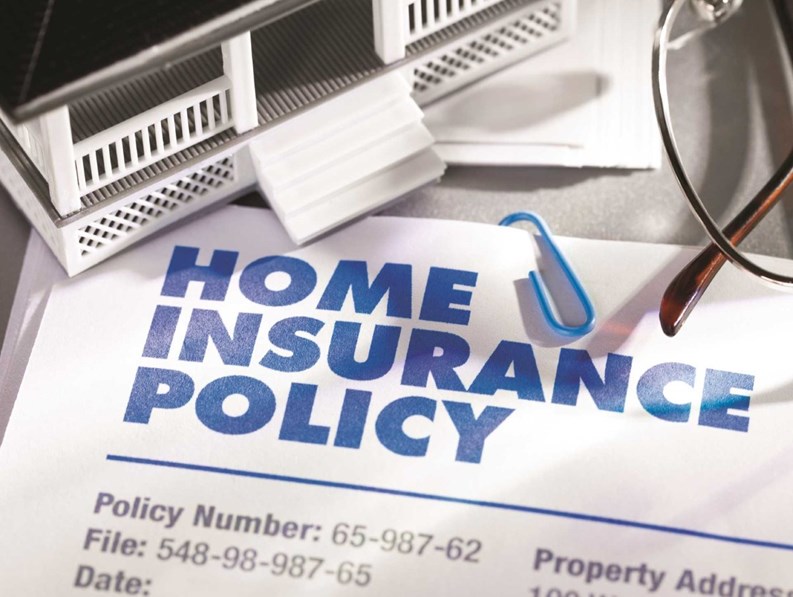Legendary funny man Benny Goodman once said, “I don’t want to tell you how much insurance I carry with the Prudential, but all I can say is: when I go, they go, too!” The comedian hits on all-important issue: how much insurance is too much, and how much is not enough?
While individual residents of a multifamily association in Chicagoland are required by their lenders to carry adequate coverage in case of a severe accident or catastrophe, condominium and homeowner association boards have a stake in their residents carrying adequate insurance as well.
Cover Yourself
If an owner is unable to pay for either their own or other liabilities due to an insurance lapse, they probably can't pay their monthly fees, assessments or mortgage either. Any one of these delinquencies will negatively impact the community as a whole—so it’s in the boards’ best interest to ensure all residents are adequately covered.
“Many condominium and cooperative owners do not cover their personal liability or damage to furnishings and decorating in their apartment,” says Mark Pearlstein, an attorney and partner with Levenfeld Pearlstein, LLC in Chicago. “Too many condo owners fail to purchase HO-6 coverage or insurance for their personal property.” While some associations offer all-in coverage in their master policy, most of the time as Pearlstein notes, HO-6 coverage or “dwelling coverage” is required.
According to insurance industry website, www.InsureOurCondo.com, these insurance policies usually cover things like frozen/burst plumbing, accidental discharge or overflow of water from pipes, fire and lightning damage, explosions, theft, vandalism and malicious mischief, damage from smoke, heavy snow, ice and sleet, among others. Generally speaking, 1,000 square feet works out to around $40,000 in personal property insurance.
Understanding Value
“An important step in determining if you have adequate coverage is figuring out what the contents of your home are worth. Although this can be tedious, the effort is worth it,” says Mindy Maggio, commercial lines sales producer for Chicago-based Rosenthal Brothers Insurance. “To really figure out how much coverage you need, you have to do an inventory, listing everything you own. Estimate the value of the possessions at current prices. If it all adds up to more than the amount your policy specifies, you’ll have to purchase extra coverage. Performing an inventory may sound like a lot of work, but you’ll need it to prove ownership when it comes time to file a claim.”
Maggio explains that unit owners need to understand the difference between replacement coverage and actual cash value. “Make sure your policy covers what it would cost to replace your possessions and not what insurers term the actual cash value. The difference might mean that you would only get a few hundred for your nine-year-old couch, instead of the $2,000 it will take to replace it,” says Maggio. “You also need to check the limits on certain personal items, such as jewelry, computer equipment and antiques. Chances are if you own these things you’ll need a rider to cover them.”
Decoding Insurance Policies
For board members, who also likely carry dwelling insurance, it is important they understand what exactly is covered by the association opposed to personal risk. Less an all-in coverage clause, common insurance coverage normally applies to common areas, the exterior of the building and energy equipment.
Kathy Hallberg Valek, of the Allstate Insurance Hallberg Valek Agency in Chicago, notes the importance of both board members and unit owners understanding policies that are offered. “When a buyer purchases a property in an association, it will fall under one of three categories,” she says. “If you buy in a homeowner’s association, and purchase a single family home, you are required to have an HO-3 policy. If your association has a master policy, it is typically only for common elements and liability on the property. If you purchase a condo, your association is required to have a master insurance policy that will adhere to your declarations as well as the Illinois Condominium Property Act.”
While also noting the importance of the aforementioned HO-6 policy, Hallberg Valek explains that a townhome purchase is the trickiest and often most confusing to the buyer. To this end, it is incumbent on the buyer to find out what the association insures before you purchase personal coverage.
“A townhome association that does not submit to the Illinois Condominium Property Act may require a unit owner to carry an HO-3 policy, much like a single family homeowner. However, it is very common that that your townhome association, through your declarations and bylaws or resolution has elected to purchase a master policy, much like a condo. In this case, the unit owner is only required to carry the HO-6,” says Hallberg Valek. “This is so important to know, because too often a townhome owner calls an agent and says that they are buying a townhome and need a policy. If the agent does not see the declarations or have a conversation with the master agent, they cannot be sure what the buyer really needs. The agent may provide an HO-3 policy that they may not need, at a cost double or triple what they could be paying for the HO-6 policy.”
Illinois Condominium Property Act
As is always the case, there are those unit owners that might question whether additional insurance coverage is required of them. Boards can point to the Illinois condominium act, explains Pearlstein. “Section 9.1(a) of the Condominium Act makes a unit owner liable for damage arising from the use or operation of his or her unit. Based upon this individual liability the Act authorizes a board to adopt a rule requiring owners to purchase liability insurance,” he continues. “If the owner does not purchase the coverage the association may buy the coverage and charge back the owner for the cost. The question is whether an association can purchase this insurance in the marketplace.”
To ensure there is no gray area or an interpretational snafu, Maggio offers the following verbiage from the Condo Act: “The board of directors may, under the declaration and bylaws or by rule, require condominium unit owners to obtain insurance covering their personal liability and compensatory (but not consequential) damages to another unit caused by the negligence of the owner or his or her guests, residents, or invitees, or regardless of any negligence originating from the unit. The personal liability of a unit owner or association member must include the deductible of the owner whose unit was damaged, any damage not covered by insurance required by this subsection, as well as the decorating, painting, wall and floor coverings, trim, appliances, equipment, and other furnishings. If the unit owner does not purchase or produce evidence of insurance requested by the board, the directors may purchase the insurance coverage and charge the premium cost back to the unit owner. In no event is the board liable to any person either with regard to its decision not to purchase the insurance, or with regard to the timing of its purchase of the insurance or the amounts or types of coverages obtained.”
Conversely, potential buyers have to do their respective due diligence to ensure that the association insurance coverage is up to snuff. “Prospective buyers should seek confirmation that the association has the insurance required by the Condominium Act,” says Pearlstein. “Lenders want to confirm that the building has coverage required by the secondary mortgage market mandated by Fannie Mae, Freddie Mac and FHA standards.”
If an association is properly insured, they will be ready anytime a claim ensues. The real problems almost always arise after an event occurred and it then becomes a guessing game as to what coverage is held by unit owners.
“Let’s remember that everyone is living in a community association. It is in the best interests of the community to make sure that everyone has the proper insurance in place,” says Maggio. “The worst time to find out that you or your neighbor doesn’t have any or adequate insurance coverage is after a loss has already occurred. A proactive board and/or managing agent should require proof of coverage from all residents on an annual basis.”
W.B. King is a freelance writer and a frequent contributor to The Chicagoland Cooperator.







Leave a Comment